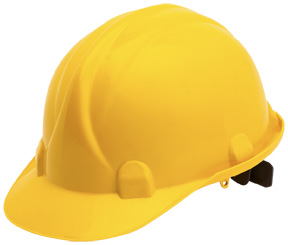Ian James, UK Sales Engineering and Training Manager at Axis Communications, discusses the potential afforded by explosion-protected cameras to reduce risk and transform operations in even the most high-risk areas.
Powerful, network-enabled surveillance cameras can play an essential role in protecting our critical national infrastructure. But installing any hardware into a hazardous area – whether a site containing oil or gas, a food processing environment like a mill or distillery, an area where sewage processing or mining may be occurring, or anywhere else that might contain a combustible or flammable substance–requires a great deal of consideration. Surveillance hardware is no different, and not every camera is suitable.
Such environments are constrained by rigorous regulatory requirements to ensure their safety, and any devices used must be globally certified as Class I/II/III Div 1 and Zone 1,21 for use in hazardous areas (according to NEC, CEC, ATEX, IECEx, and others). Off-the-shelf cameras don’t meet those specifications, so only those certified to comply with industry safety standards will suffice. Explosion-protected cameras employ heavy-duty housings, usually constructed from stainless steel or aluminium, to prevent sparks igniting vapours, gases, dust, or fibres in the environment.
Tough and tenacious technology
Physical toughness is typically coupled with weatherproofing which makes explosion-protected cameras suitable for wet or dusty locations, and temperatures ranging from arctic cold to desert heat. Many explosion-protected cameras also include advanced imaging features, such as wide dynamic range, which helps to capture clear footage when contrasting bright and dark areas within the camera’s field of view.
A combination of long-range optical zoom and pan-and-tilt functionality facilitates tracking with pinpoint accuracy, even when the camera is installed in difficult to access locations. Image stabilisation ensures sharp footage even in vibration-heavy environments. Essentially, if a camera is required that can provide a consistent, reliable video stream, opting for rugged hardware that meets the highest possible specifications makes sense.
Harnessing the capability of intelligent cameras
Protection at the perimeter is where many installations would end. But such is the versatility of network cameras, bolstered by advanced analytics and AI capabilities, that they can be used as powerful sensors to form essential building blocks of data-driven networks. Taking advantage of this fact allows cameras to be used to improve or completely overhaul critical security, safety, and automation functions; a role that carries extra weight within inhospitable or dangerous environments.
Today’s modern network cameras provide a high-resolution, high-bitrate video stream, and their power allows them to produce an accompanying stream of metadata. Generated within the camera on the edge of the network using artificial intelligence (AI) and powerful analytics, this data helps to uncover complex and invaluable insights about the camera’s broad field of vision, whether that might be related to workers in specific areas, the status of critical machinery, or even environmental conditions.
Health and safety
Replacing human contact with remote management is vital in many environments. On the most basic level, the placement of properly certified and strategically placed cameras allows many of the visual monitoring tasks previously performed by humans to be carried out offsite, keeping manual intervention to a minimum. This is particularly valuable in restricted or otherwise dangerous spaces where people are placed at significant risk when entering or working in the environment.
In areas where people are required, analytics can track the location and movement of personnel, count the number of people in an area and the duration of their shift, or even determine whether staff are wearing appropriate PPE. Cameras together with edge-based analytics can detect the presence of smoke, while thermal cameras can identify and accurately pinpoint the source of excessive heat. This can provide an early warning signal that an issue with key equipment needs to be urgently addressed. There is vast potential in the combination of live footage and metadata to meet precise requirements within such critical environments, and integrating camera data with the information from other connected devices and sensors can be powerful when that data is provided in an open and accessible form.
Applications supported by video data
Explosion-protected cameras offer a unique opportunity to build bespoke applications which are enriched by visual feedback. Overlaying data from secondary sensors onto images of critical hardware offers operators an immediate combination view; a discrete heat sensor reaching a certain threshold, for example, might generate an alert containing an annotated view of its location.
Linking cameras to operational technologies enables further layers of automation and control. A camera detecting the presence of people within a restricted area could immediately shut down hazardous machinery. Similarly, an infra-red camera detecting the presence of gas could trigger an IP strobe siren to issue a burst of light and sound as an instant warning, while instructing relevant hardware to close gas valves. Access control systems could be automatically set to prevent others from entering the area until the issue is resolved. The complexity of such applications is theoretically unlimited and could make a huge difference to productivity and employee safety.
The implications are clear. If a hazardous environment demands video coverage, explosion-protected cameras are essential, but the benefits they offer beyond video capture alone could be transformative to the operational efficiency and situational safety of those environments. We have now seen the launch of the world’s first explosion protected camera for use in Zone / Division 2 hazardous areas . As new and more complex equipment demands ever more stringent monitoring, maintenance, and regulatory compliance, the presence of the newest innovations in fully-certified explosion-protected network cameras will become ever more valuable.
Learn more about explosion-protected cameras at: https://www.axis.com/products/explosion-protected-cameras.
About the author
Ian James, UK Sales Engineering and Training Manager at Axis, has spent 25-plus years in the security sector in various roles that have seen him take responsibility for pre and post-sales support. For the last three years his focus has been on managing a team of Sales Engineers to provide technical pre-sales support to Axis channel partners and end users.










